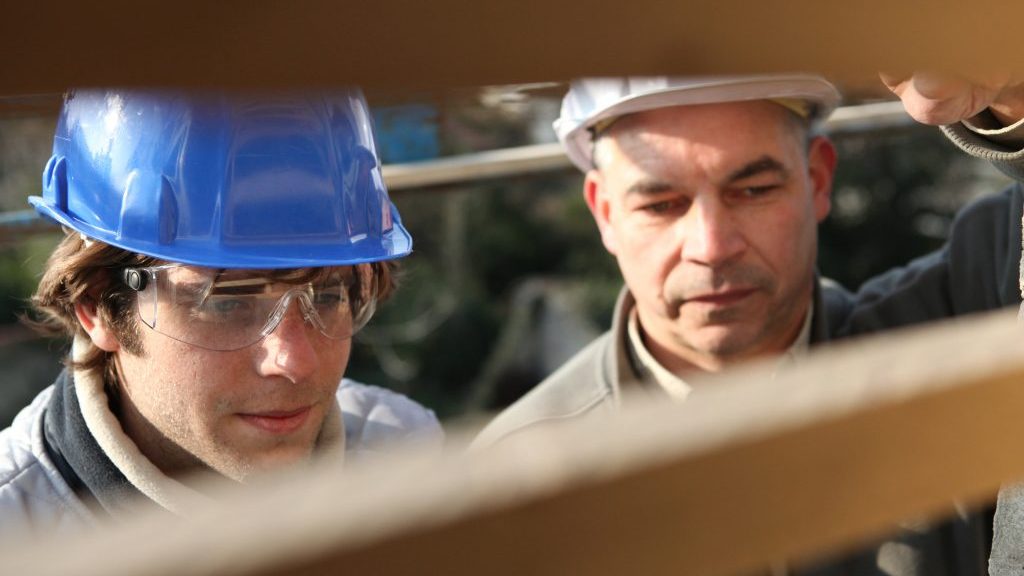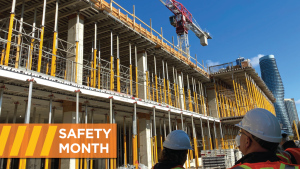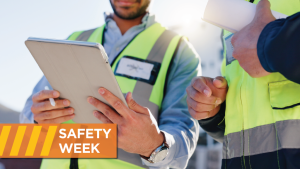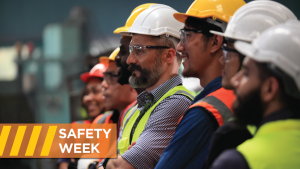If you can’t get your crew to a safety training, there’s a bus which will bring the training to you.
A bus which is outfitted for certified safety training is an innovative wrinkle to get this most important job done, says Randy Dignard, president of Industrial Safety Trainers.
“The bus has its own heating and AC system,” he says. “So we can park it anywhere. We get about 15 people a time through the bus so we can do two or three, two to three hour sessions, a day. It’s useful when a construction trailer is too busy because there are people coming and going. The seats are set facing each other and that’s because we use a discussion method to talk about safety training.”
The company has been training workforces in OH&S requirements for more than 20 years and has 26 full-time employees and seven more contractors.
With offices in Barrie, Ottawa and even Nunavut, some 40 per cent of the 18,000 people trained each year are in the construction sector.
Industrial Safety Trainers and their related company, Construction Safety Trainers, offer a gamut of OH&S complaint safety training either at their locations, at the client’s offices, a hotel meeting room or onsite either in a trailer or on the bus.
This next year will be a busy one for the construction sector, he says, with the decriminalization of cannabis and a new program to go into schools to teach students construction safety awareness as part of the their possible co-op placements and their job experience programs.
It’s the cannabis issue, however, which is top of mind, he says, because many companies just weren’t prepared to be the first line of enforcement.
“You have a guy and he comes to work and he smells of pot,” he says. “What do you do? You say, are you stoned? He says he was at a party the night before and there was pot smoked and it got onto his coat.”
The supervisor either has to call him a liar with no way of proving anything or accept that he is being truthful, he says.
Either way, says Dignard, there’s a liability at play and the correct procedure is to document the conversation with the reason for the decision either, to let the worker remain or why he was sent home.
“If he slips or falls at work after that, you’ve done due diligence in documenting it,” he says.
The training program helps employers and supervisors formulate a drug and alcohol policy and protocol and how it can be managed. That part is new but the issue of impairment in the workplace is not new.
Whether it’s a beer at lunch, prescription painkillers, allergy medication or even just fatigue from long hours and overtime, distractions on the job can be fatal to a worker or their co-workers.
Construction Safety Training offers more than 40 programs from working at heights to basic safety awareness.
Fairly new on the program list is a reaction to requirements by large general contractors such as PCL and EllisDon that any sub-trade on their job also submit a copy of their safety manual and policies.
“We had a subcontractor who didn’t realize when they responded to the RFP that this was a requirement now so they had to scramble to create a manual,” he says. “It sound strange that a company of three to four guys would have a 200-page safety manual but we’re spending a lot of time working with companies to create one and to ensure they are COR certified,” he says.
Also popular is the Joint Health and Safety Committee (JHSC) certification which is a six-day program, he says. The JHSC is a requirement under the law.
“Starting next year we’re also going to be going into schools to give students training because the Ministry of Labour wants mandatory construction safety training awareness courses for co-op student placement, especially for kids not going onto college and university, who may go into construction,” he says. “We expect to start rolling that out in February and it is something for all high school students in Ontario and we’re working with the Ministry of Education.”









Recent Comments
comments for this post are closed